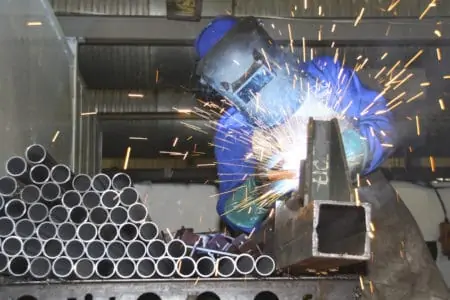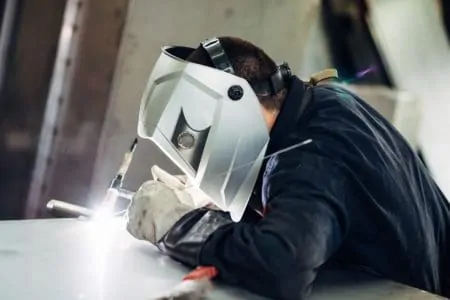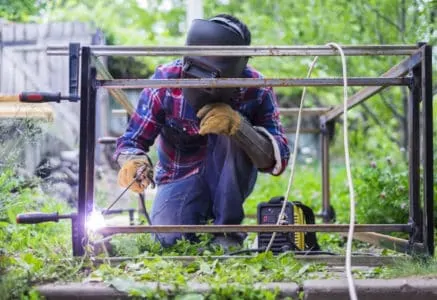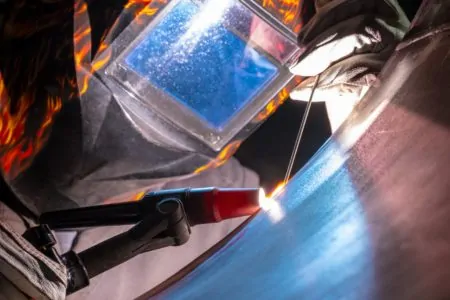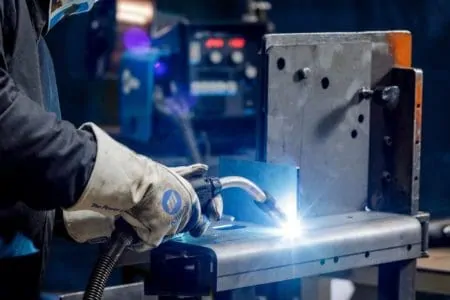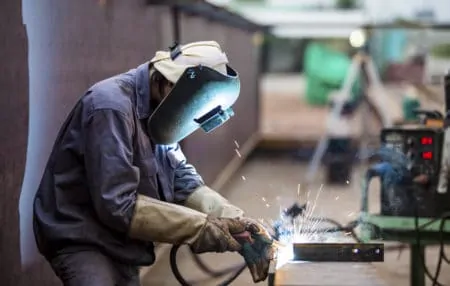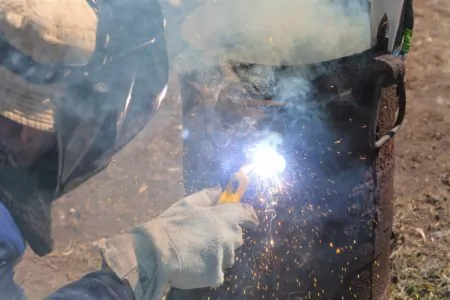Stainless steel is a firm favorite in the construction world thanks to its durability and ability to withstand corrosion. So it follows that welding stainless steel is common too, but it is not without its challenges.
We look at the basic techniques employed by a typical stainless steel welder to achieve the best possible results.
Key Takeaways
- Choose the right welding method: MIG is faster but messier, TIG is neater but takes more time, and Stick is best for flat welding.
- Proper preparation and cleaning: Keep tools for stainless steel separate and clean, as contaminants can cause rusting issues.
- Watch the temperature: Overheating stainless steel can cause distortion, cracking, and burning of the chromium oxide layer.
- Use the correct filler: Select a filler that matches the grade of the stainless steel being welded for a strong, corrosion-resistant joint.
What Is Stainless Steel?
Stainless steel is an alloy that contains chromium in varying amounts to give it its stainless element to protect it from rust. The chromium amount ranges from 11 to 30 percent, changing the alloy’s chemical makeup and how it performs.
Stainless steel is used in everything from the brewing industry to the medical profession, construction, food prep, oil and pipe industries, as well as the restaurant world. Even your basic cutlery is stainless steel.
The wide use of stainless steel does not mean it is a cheap material. On the contrary, stainless steel is expensive compared to other metals; up to 5 times the cost of mild steel. And when it comes to welding, there are a few tricky things you need to keep in mind.
Is Welding Stainless Steel Difficult?
Stainless steel retains heat efficiently, making it difficult to weld, especially for novice welder. Excessive weld heat easily warps the steel and it even distorts when it cools under the wrong conditions.
There are 4 grades of stainless steel, classified according to their materials and welding qualities:
- Austenitic.
- Ferritic.
- Martensitic.
- Austenitic-Ferritic (Duplex).
Each of these grades of steel have varying degrees of nickel, chromium, and carbon. The first 3 are single-phase steels, but the austenitic-ferritic is a dual-phase because it contains ferrite and austenite in the microstructure.
The quantities in each alloy mean that when you weld them, they react differently to heat and cooling, making the act of welding stainless steel complicated.
Can Welded Stainless Steel Rust?
It does not rust when exposed to the elements thanks to its unique properties. However, the welding process can burn off layers of the chromium oxide, the main ingredient that prevents stainless steel from rusting. This is evident as the metal starts to discolor, turning blue as it heats.
By burning off the chromium layer, you expose the steel to the elements and increase the risk of rusting.
What Type of Welding Is Used for Stainless Steel?
There are 3 suitable methods of welding stainless steel. Each has its attributes and failings.
MIG Welding
MIG welding is the go-to method of welding when you require speed and efficiency. It is not the neatest or most precise way but is quick and easy to master. MIG welders are not as concerned with finesse as TIG welders. It gets the results, regardless of whether it looks good.
Pros
- Fast and efficient.
- Easy to master.
- Go-to method.
- Suited to repairs and industrial uses.
- Cheaper.
Cons
- Messy weld.
- Suitable where the weld is hidden.
TIG Welding
TIG welding is neater and more precise. This method is the most common way of welding stainless steel.
It focuses on the quality and aesthetics of the finish. This is important if you are welding sculpture or bespoke designs where the quality of the joints are visible and part of the design of the structure. TIG welders take longer to achieve these results, thanks to the precise nature of the weld. TIG welding is also harder to master.
Pros
- More precise.
- Neater finish.
- Ideal for furniture and bespoke work.
Cons
- Harder to master.
- Takes longer.
- More expensive.
Stick Welding
If the steel is flat or horizontal, stick welding is simple, but welding vertical steel has a whole new set of challenges. You have to set the amperage low because the rods heat quickly and droplets of molten steel start to run.
When using a stick welder, you should keep a tight arc and use a push technique when uphill welding. Also, use a slight weave, or “J” motion to flatten the bead to prevent run-off.
Pros
- Cheapest method.
- Easy to master.
- Ideal for flat or horizontal welding.
- Ideal for industrial uses.
Cons
- Messy.
- Suitable when the weld is hidden.
- Hard to weld vertically.
Best Practices for Welding Stainless Steel
There are many techniques, hints, and tips for welding stainless steel, but here are our essential best practices.
1. Preparation Is Crucial
Failing to plan is planning to fail. Ever heard that? It is true. If you don’t plan properly to prepare the steel, you are going to suffer the worst results. Keep a separate set of tools for preparing stainless steel, and make sure they are clean with no deposits of carbon steel residue on them.
Stainless steel is very sensitive to any amount of carbon steel, and if the material becomes contaminated, it could cause the steel to rust. Even particles of carbon pose a rusting threat to stainless steel. So, keep a set of clean tools, specifically for stainless steel.
2. Clean the Steel
Properly cleaning the steel can help reduce instances of rust and also help to create a better joint. Again, well cleaned stainless steel is better prepared to heal itself during the weld as the chromium oxide protects the steel.
Removing paint and beveling is crucial for the best weld to occur. Remove all contaminants.
3. Watch the Temperature
Watching the heat build-up, especially in one spot, is vital for the strongest welds. Chromium layers burn away if the steel gets too hot, so make sure you don’t linger too long in one place. Overheating stainless steel causes it to distort as well as crack.
4. Choose Your Filler
When welding stainless steel, it is vital that you choose the correct grade filler. Stainless steel is sensitive and requires that the filler is the same grade steel as the metal you are welding. 316 base metal needs 316-grade filler. You get the picture. Don’t think that any old filler will do. It won’t!
5. Take Your Time
Take it slowly and never rush. Welding stainless steel is an art form and one that requires patience and a skilled eye.
6. Preheat the Steel
The importance of preheating stainless steel increases with the thickness of the material. It is necessary to avoid cracking or warping. Stainless steel doesn’t require the same preheating regime as other steels or metals, but it does need to be gradually heated to prevent cracking and distorting.
7. Post Heat Procedure
Heating the steel takes careful attention, as does the cooling process. Slowly reducing the heat avoids the same disasters that rapid heating brings. The steel is likely to crack and warp, although this is more likely the thicker the material gets.
Welding Stainless Steel FAQs
Keeping It Real With Steel
Don’t be discouraged from welding stainless steel. Sure, it is tricky and requires a nuanced approach, but that doesn’t mean it is impossible. On the contrary, stainless steel can be forgiving and easy to work with as long as you do your homework.
Get the steel prepared, get the gas mix right, the temperature set correctly, and always pre and post heat. After that, it’s down to skill. Good luck!
